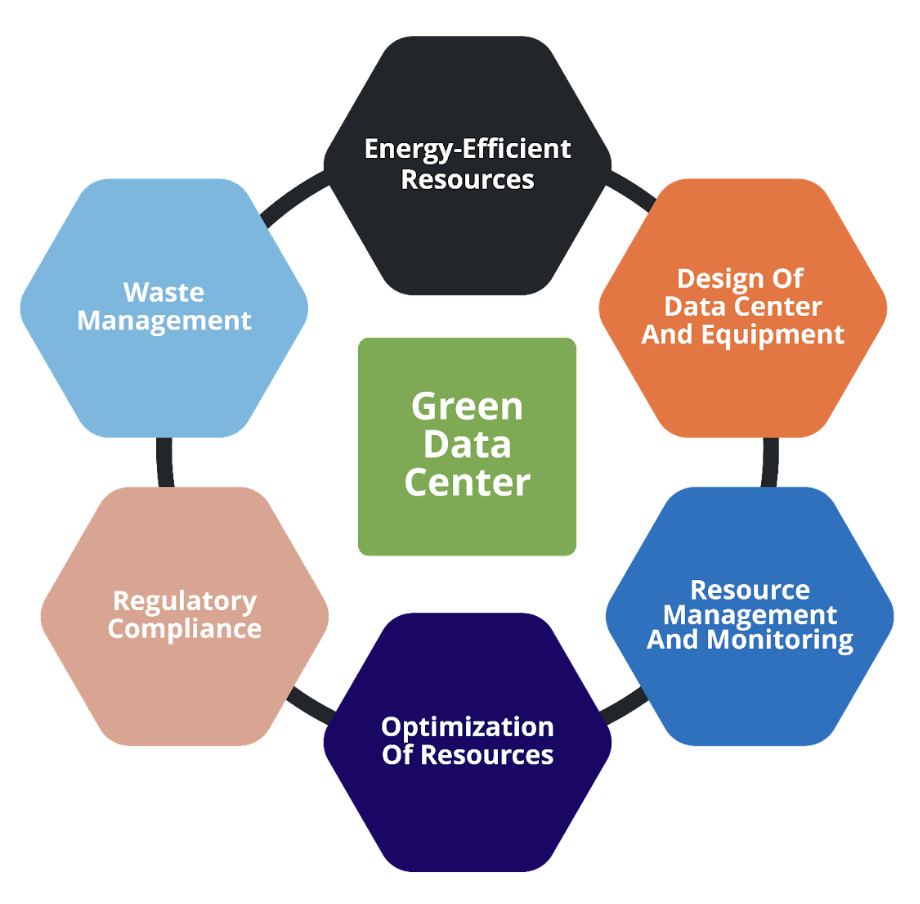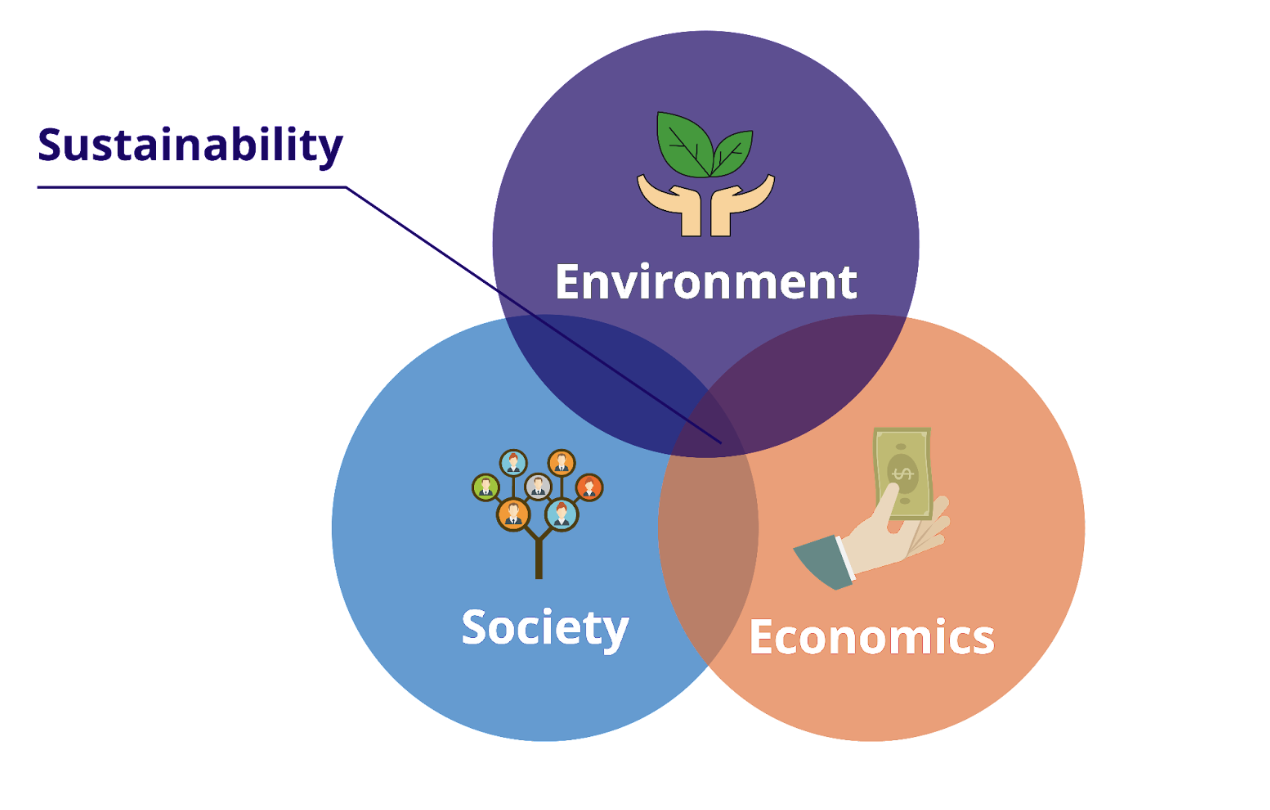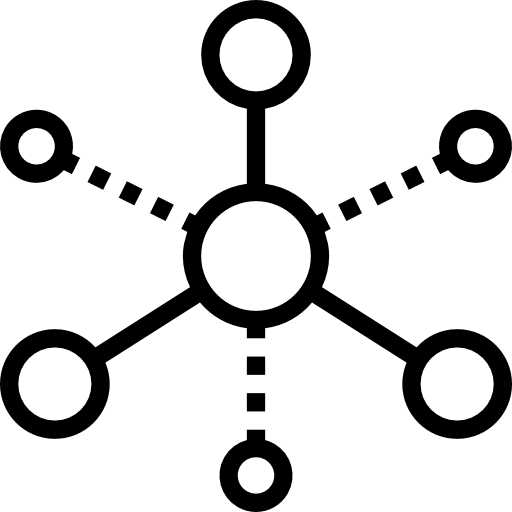Concepts and Techniques for the Green Data Center
A green data center is an IT facility designed, constructed, and operated according to international standards with a strong emphasis on minimizing environmental impact. It encompasses a range of practices and technologies aimed at reducing energy consumption, carbon emissions, and resource usage while maximizing operational efficiency and sustainability.
The fundamental principles of green data centers include the following:
- Energy efficiency
- Optimal hardware design and sustainable infrastructure
- Resource management and monitoring
- Resource optimization
- Regulatory compliance
- Waste management

Fundamentals of green data centers. (source)
Summary of key metrics for green data centers
What makes a green data center “green”? Understanding this requires measuring the operation and performance of the data center in various ways—and not just once, but on an ongoing basis. The table below provides a summary of some of the key metrics that are often used to indicate how well a data center is meeting its green objectives.
| Metric | Explanation |
|---|---|
| Power usage effectiveness (PUE) | PUE measures the energy efficiency of a data center by calculating the ratio of total energy consumed to energy consumed by IT equipment alone. |
| Total power usage effectiveness (TUE) | TUE helps indicate the degree of energy use as delivered from the utility to the silicon (IT hardware component) level. It is the ratio of total energy into the data center to the total energy used by the computational components. |
| Data center efficiency (DCe) | DCe assesses the overall performance and effectiveness of a data center, considering factors like energy efficiency, equipment utilization, and operational efficiency. |
| Renewable energy usage | This metric quantifies the percentage of renewable energy sources used by a data center, indicating its level of reliance on clean and sustainable energy. |
| Carbon emission intensity | Carbon emission intensity measures the amount of carbon emissions generated per unit of data center activity, providing insight into the center’s environmental impact. |
| Water usage effectiveness (WUE) | WUE evaluates the water efficiency of a data center by contrasting the amount of water consumed to the IT equipment’s energy consumption. |
| Electronic waste recycling rate | This metric measures the percentage of electronic waste generated by a data center that is recycled or disposed of responsibly. |
| Material efficiency | Material efficiency focuses on optimizing resource utilization and minimizing waste within a data center’s equipment, infrastructure, and construction materials. |
| Energy reuse effectiveness (ERE) | ERE quantifies the efficiency of reusing waste energy generated within a data center for other processes or operations. |
| Greenhouse gas (GHG) emissions | GHG emission figures indicate the amount of greenhouse gasses emitted by a data center, including carbon dioxide, methane, and nitrous oxide. |
The growing importance of sustainability
Sustainability is gaining increasing attention in the IT industry in general and in the data center industry specifically due to the need to mitigate the environmental impact of technology. Data centers are integral to the digital infrastructure, but they consume vast amounts of energy and contribute to greenhouse gas emissions, so their rapid growth has raised concerns about their carbon footprint and energy consumption. As the demand for data processing increases, the environmental footprint of data centers increases. Embracing sustainability in data centers is crucial to minimizing greenhouse gas emissions, reducing their impact on climate change, and reducing reliance on non-renewable energy sources.
Embracing sustainability in data centers enhances an organization’s reputation and demonstrates its commitment to corporate social responsibility. Customers and stakeholders increasingly expect businesses to prioritize sustainability, and a green data center can positively influence brand image and attract environmentally conscious partners and clients.

Sustainability resides at the intersection of environmental, societal, and economic considerations. (source)
Environmental impact and carbon footprint
Traditional data centers pose several challenges in terms of their environmental impact. These challenges include:
- Carbon emissions and climate impact: Traditional data centers consume large amounts of energy, resulting in significant carbon emissions and contributing to climate change. The reliance on fossil fuels for power generation exacerbates this impact.
- Electronic waste generation and responsible disposal: Data centers generate electronic waste through the regular replacement of outdated equipment. Improper disposal of this waste can lead to environmental pollution and health hazards.
- Water consumption and conservation: Data centers require substantial amounts of water for cooling purposes. This consumption can strain local water resources and raise concerns about sustainability.
Green data centers play a crucial role in mitigating these environmental impacts through various initiatives, including:
- Reductions in carbon footprint and greenhouse gas emissions: Green data centers prioritize energy efficiency and utilize renewable energy sources to minimize carbon emissions and reduce their overall environmental footprint.
- Recycling and waste reduction initiatives: Green data centers implement robust recycling programs and adopt responsible waste management practices to minimize electronic waste generation and promote the recycling and reuse of materials.
- Water conservation and sustainable practices: Data centers focused on green techniques employ innovative cooling technologies, such as liquid cooling and water reuse systems, to reduce water consumption and implement sustainable water management practices.
- Green IT strategies: These include the deployment of smart technology, powering down IT equipment when not in use, strategically scheduling computer use, selecting energy-efficient computer gear, employing automated power management, and using temperature checks to optimize cooling.
Energy efficiency in green data centers
Focusing on energy efficiency allows green data centers to not only reduce their carbon footprint and environmental impact but also achieve cost savings through lower energy bills. The adoption of energy-efficient practices and technologies aligns with sustainability goals, promotes responsible resource usage, and contributes to a more environmentally conscious IT industry.
Energy efficiency is of paramount importance in green data centers for the following reasons:
- Cost savings: Maximizing energy efficiency reduces operational expenses by lowering energy consumption and associated utility costs.
- Environmental sustainability: Energy-efficient data centers minimize carbon emissions and contribute to environmental conservation and sustainability efforts.
- Scalability and future-proofing: Efficient data centers have the flexibility to accommodate future growth and increased computing demands without excessive energy consumption.
- Regulatory compliance: Meeting energy efficiency standards and regulations helps data centers adhere to environmental guidelines and avoid penalties.
- Resource conservation: Energy efficiency in data centers promotes responsible resource usage. By minimizing energy waste and optimizing resource utilization, data centers can conserve valuable natural resources and contribute to a more sustainable future.
- Uptime and performance: Energy efficiency goes hand in hand with improved reliability and performance in data centers. Efficient cooling systems, power distribution, and equipment design result in better operational stability, reduced downtime, and enhanced performance of IT infrastructure.
The following table describes some innovative design strategies that collectively contribute to enhanced energy efficiency in green data centers.
| Strategy | Description |
|---|---|
| Efficient airflow management techniques | These methods involve optimizing the airflow within data centers to improve cooling efficiency and reduce energy waste. This includes practices such as implementing hot aisle / cold aisle containment, using blanking panels to prevent airflow bypass, and utilizing raised floor designs for controlled air distribution. |
| Advanced cooling systems and technologies | These approaches include liquid cooling solutions, such as direct-to-chip or immersion cooling, that offer more efficient heat dissipation than traditional air cooling methods. Additionally, technologies like free cooling leverage outdoor air or chilled water sources during favorable conditions. |
| Energy-efficient hardware components and server virtualization | Using energy-efficient hardware components and implementing server virtualization are essential practices for maximizing energy efficiency in data centers. Energy-efficient servers with high-efficiency power supplies, low-power processors, and intelligent power management features help reduce energy consumption. |
| Efficient power distribution | Utilizing efficient power distribution systems, such as overhead busway systems or intelligent power distribution units (PDUs), minimizes power losses and improves overall energy efficiency. These systems enable more precise power delivery and enhance monitoring and control capabilities. |
Renewable energy integration
Renewable energy integration refers to the incorporation of renewable energy sources into various aspects of infrastructure to reduce reliance on fossil fuels and promote sustainability. In data centers, this involves utilizing renewable energy sources to power data center operations, reducing carbon emissions, and mitigating environmental impact.
The integration of renewable energy in data centers can be achieved through various methods:
- On-site renewable energy generation: Data centers can install solar panels, wind turbines, or other renewable energy systems on their premises to directly generate clean energy for powering their operations. This approach allows data centers to become self-sufficient in terms of energy production while reducing reliance on grid-supplied electricity.
- Off-site renewable energy procurement: Data centers can source renewable energy from third-party suppliers who specialize in providing clean energy. These suppliers typically generate renewable energy through wind farms, solar parks, or hydroelectric plants and supply it to data centers through the existing grid infrastructure.
- Power purchase agreements (PPAs) and renewable energy credits (RECs): Data centers can enter into agreements with renewable energy providers to purchase renewable energy generated off-site, so they can support renewable energy projects and offset their carbon footprints even if they cannot generate renewable energy on-site.
- Energy storage systems: Integrating energy storage solutions, such as batteries, allows data centers to store excess renewable energy for later use, ensuring a more consistent and reliable power supply.
- Microgrids and decentralized energy systems: Implementing microgrids or decentralized energy systems within data centers allows for the integration of renewable energy sources at a local level. These systems can combine renewable energy generation, energy storage, and advanced energy management technologies to optimize energy usage and minimize reliance on non-renewable sources.
Evaluating renewable resource integration with existing sources
When integrating renewable energy sources into a data center, it is recommended to prioritize the following areas:
- Power generation: The primary focus should be on integrating renewable energy sources into the data center’s power supply infrastructure. This involves assessing the feasibility of on-site renewable energy generation—such as hydrogen fuel cells, solar panels, and wind turbines—to power the data center’s operations.
- Backup power systems: Integrating renewable-energy-based backup power systems is crucial to ensuring uninterrupted operations during power outages while staying focused on green targets. Renewable energy sources for backup power such as solar-powered batteries or backup generators using biodiesel (WVO) can enable data centers to enhance resiliency and reduce dependence on traditional backup solutions.
- Cooling systems: Cooling represents a significant portion of a data center’s energy consumption. Renewable-energy-powered cooling technologies like geothermal cooling or solar-powered absorption chillers can reduce environmental impact.
- Lighting and auxiliary systems: Lighting systems and auxiliary systems within the data center (such as ventilation and monitoring systems) can also be integrated with renewable energy sources. This includes utilizing solar-powered lighting, energy-efficient LED fixtures, and renewable-energy-powered equipment for auxiliary functions.
- Non-critical loads: Renewable energy integration can initially focus on powering non-critical loads within the data center. These loads include non-essential equipment, testing environments, or auxiliary infrastructure. This approach lets data centers gradually increase their renewable energy utilization without impacting critical operations.
Best practices for integrating renewable energy into data centers
Follow these approaches for optimal data center renewable energy integration:
- Monitor sustainability metrics: As mentioned earlier, metrics are essential to green data centers: You can’t manage something you don’t measure. Data center operators can measure power consumption and carbon emissions data with the help of software and then use it to optimize efficiency or address shortcomings.
- Conduct a thorough feasibility assessment: Assess the viability and potential benefits of renewable energy integration.
- Optimize energy efficiency: Prioritize energy efficiency measures within the data center before integrating renewable energy. Implement efficient cooling systems, server virtualization, and other energy-saving practices to reduce overall energy demand.
- Choose appropriate renewable energy technologies: Select the renewable energy technologies that best suit the data center’s location, energy demand, and available resources.
- Assess energy storage options: Explore energy storage solutions such as batteries or pumped hydro storage to store excess energy generated by renewable sources.
- Monitor and optimize renewable energy performance through data center infrastructure management (DCIM): Implement robust monitoring systems to track the performance of renewable energy sources and overall energy consumption. Real-time data monitoring and analysis allow for proactive identification of issues, optimization of energy usage, and continuous improvement of the renewable energy integration strategy.
- Stay up to date with emerging technologies and incentives: Keep abreast of the latest advancements in renewable energy technologies and incentives offered by governments or utility providers.

DCIM software analysis dashboard from Device42 showing power levels, carbon emissions and other essential data.
Example data centers using renewable energy sources
Many data centers worldwide are currently using renewable energy sources to power their operations. Some notable examples include the following:
- Facebook: The Facebook data center in Lulea, Sweden, is powered by a combination of hydroelectric and wind power. Hydroelectric power is derived from the nearby Lule River, which has multiple hydroelectric power plants, and the region has ample wind farms that supply clean energy.
- Microsoft: Its data center in Cheyenne, Wyoming, is powered by a 237 MW wind farm located directly adjacent to the facility. The turbines provide all the electricity needed to operate the data center, making it completely powered by renewable energy.
- Apple: Apple’s Maiden Data Center in North Carolina is one of the largest data centers in the world powered entirely by renewable energy. It utilizes a combination of on-site solar arrays and biogas fuel cells to generate electricity.
Efficient cooling and heat recovery
Inefficient cooling practices can result in unnecessary energy waste and increased operational costs. Implementing green cooling technologies and techniques is essential for maximizing energy efficiency in data centers; these methods can be broken down into the following general areas.
Liquid cooling solutions
Direct-to-chip cooling is a method where liquid cooling is brought directly in contact with the heat-generating components of IT equipment, such as processors or graphic cards. It allows for highly efficient heat transfer and can handle high-power densities. By efficiently removing heat at the source, liquid cooling eliminates the need for extensive airflow and reduces the energy consumption associated with fan-driven cooling systems.
Immersion cooling goes a step further, submerging IT components or even entire server systems in specialized dielectric fluids that have excellent heat transfer properties. This method provides a more direct and efficient cooling mechanism as the fluid absorbs heat directly from the components. Immersion cooling eliminates the need for air conditioning and fans entirely, resulting in substantial energy savings.
Free cooling methods
Air-side economization involves using cool outside air to provide cooling without the need for mechanical refrigeration during favorable weather conditions.
In a similar vein, water-side economization uses water sources such as rivers, lakes, or cooling towers to assist in the cooling process. This lets data centers reduce their reliance on mechanical cooling systems, minimizing energy consumption while optimizing cooling effectiveness.
Heat recovery and repurposing
These methods capture heat that would otherwise be wasted and put it to good use:
- Heat redistribution: Waste heat from data center components can be transferred through a network of pipes to nearby buildings for space heating during colder months.
- Combined heat and power (CHP) systems: Waste heat can be integrated into combined heat and power systems, a process also known as cogeneration. These systems generate both electricity and heat, with the waste heat produced during electricity generation captured and used for heating applications.
- Thermal energy storage: Waste heat can be stored for later use in thermal energy storage systems. This provides more flexibility and efficiency, particularly during peak demand periods.
Tools and technologies
A variety of systems and methods have been developed to assist organizations in their journeys toward green data center implementation.
Data center infrastructure management (DCIM) software
Probably the most important overall tool, DCIM software provides centralized monitoring, management, and control of data center infrastructure, including power, cooling, carbon emissions, and space utilization. Some DCIM systems, such as Device42’s, can help reduce power costs by 30% or more while decreasing the center’s carbon footprint.
The pursuit of “five 9s uptime” (99.999% availability) is focused on maintaining continuous operations and minimizing downtime. While renewable energy sources can contribute to the overall energy mix of a data center, the immediate priority during failover situations is to ensure uninterrupted power supply, which may rely on existing non-renewable sources. Some DCIM tools can even provide power failover functionality to assist with this process.
Other systems and tools
Here are some of the other notable technologies relevant to green data centers:
- Power usage effectiveness (PUE) monitoring tools: Tools for measuring and tracking the energy efficiency of data centers
- Energy monitoring and metering systems: Systems that monitor and meter real-time energy consumption
- Environmental monitoring systems (EMSes): Systems for monitoring and managing environmental conditions in real time
- Computational fluid dynamics (CFD) software: Software for simulating and analyzing airflow and thermal characteristics in data centers
- Intelligent power distribution units (PDUs): Power distribution units with advanced monitoring and control capabilities
- Automated server and cooling control systems: Systems for dynamically adjusting server and cooling equipment settings for energy optimization
- Virtualization and server consolidation tools: Tools for server virtualization and consolidation, reducing hardware footprint and energy usage
Certifications and standards
Some well-known certifications and standards for green data centers include the following:
- Leadership in Energy and Environmental Design (LEED) certification
- ISO 50001: Energy Management Systems
- ENERGY STAR Certification for Data Centers
- Green Grid Data Center Maturity Model (DCMM)
- US Department of Energy (DOE) Data Center Energy Efficiency Program (DCeP)
- Electronic Product Environmental Assessment Tool (EPEAT) certification
- Building Research Establishment Environmental Assessment Method (BREEAM) certification
- EU Code of Conduct for Data Centers
- EN 50600: European-wide transnational standard
- TIA-942: Telecommunications Infrastructure Standard for Data Centers
- Uptime Institute’s Tier Standards
Emerging technologies
By leveraging the following emerging technologies, data centers can further enhance their sustainability efforts, optimize energy usage, and reduce their environmental footprints.
- Combining AI and DCIM software for energy optimization: Artificial intelligence algorithms integrated with DCIM can enable real-time monitoring, predictive analytics, and the optimization of data center operations for improved energy efficiency and resource utilization.
- Edge computing and decentralized data centers: Edge computing brings data processing closer to the source, reducing the need for long-distance data transmission and enabling smaller, decentralized data centers. This approach reduces energy consumption and latency while promoting more sustainable infrastructure deployment.
- Circular economy approaches and sustainable procurement: The term “circular economy” refers to a general framework of operation based on eliminating waste and using/reusing resources as long as possible. Data centers can embrace circular economy principles by focusing on sustainable procurement practices. This includes sourcing energy-efficient equipment, utilizing refurbished or recycled hardware, and partnering with vendors committed to environmental responsibility throughout the supply chain.
Conclusion
Green data centers are not only essential for reducing the environmental footprint of the IT industry but also for ensuring a sustainable and resilient digital infrastructure. Their adoption and continued development are crucial in our collective journey toward a greener and more sustainable future. Throughout this article, we have explored various important considerations related to green data centers, highlighting their significance in reducing environmental impact.




